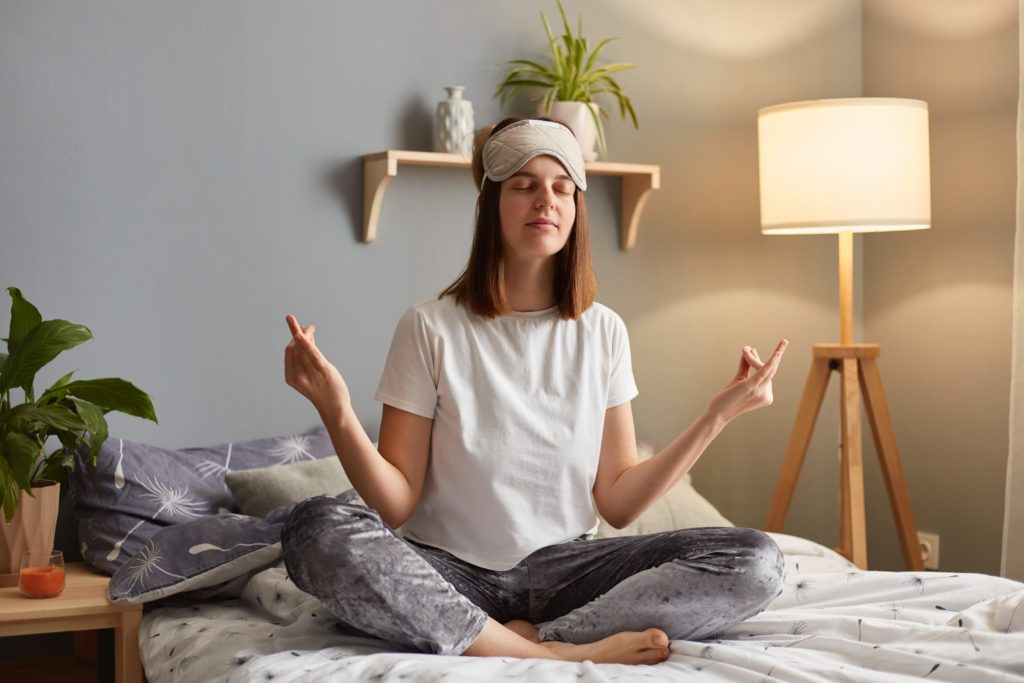Introduction
A good night’s sleep is essential for overall health and well-being. Unfortunately, many of us struggle with sleep disturbances, whether it’s difficulty falling asleep, staying asleep, or simply feeling unrested in the morning. In our fast-paced, stress-filled lives, sleep often takes a backseat. Restorative yoga, a gentle and calming practice, can help improve the quality of your sleep by reducing stress, promoting relaxation, and releasing physical tension. In this blog, we will explore restorative yoga techniques and tips to enhance your sleep and help you wake up feeling rejuvenated.
Understanding Restorative Yoga
Restorative yoga is a passive form of yoga that focuses on relaxation and restoration. It involves gentle, supported poses held for extended periods, often using props like bolsters, blankets, and blocks. The primary goal of restorative yoga is to ease physical and mental tension, activate the parasympathetic nervous system (the “rest and digest” mode), and enhance relaxation.
Restorative Yoga Benefits for Sleep
- Stress Reduction: Restorative yoga emphasizes deep, mindful breathing and gentle stretching, both of which help lower stress hormone levels. By calming the mind and reducing stress, you create a conducive environment for better sleep.
- Muscle Relaxation: Restorative poses gently stretch and relax muscles, particularly in areas that accumulate tension, such as the shoulders, neck, and lower back. This relaxation promotes physical comfort during sleep.
- Enhanced Breath Awareness: Restorative yoga encourages awareness of the breath. This heightened sensitivity to your breath carries into sleep, helping you breathe more rhythmically and deeply as you rest.
- Improved Sleep Quality: With reduced stress, physical comfort, and mindful breathing, restorative yoga can significantly enhance the quality of your sleep. You are more likely to fall asleep faster, experience fewer disruptions, and wake up feeling refreshed.
- Enhanced Mental Clarity: Regular restorative yoga practice can also lead to improved mental clarity, helping you make decisions, solve problems, and manage stress more effectively during the day.
Restorative Yoga Techniques for Better Sleep

- Supported Child’s Pose
Supported Child’s Pose is a relaxing posture that gently stretches the lower back and promotes a sense of surrender. It’s an excellent choice to do before bedtime to release physical and mental tension.
How to do it:
- Place a bolster or a few folded blankets on your mat.
- Kneel on the mat, big toes together, knees apart.
- Lower your torso onto the bolster or blankets, extending your arms forward or resting them by your sides.
- Close your eyes and breathe deeply, holding the pose for 3-5 minutes.
- Legs Up the Wall
Legs Up the Wall is a restorative inversion that promotes relaxation and improved circulation. It’s beneficial for easing tired legs and calming the mind.
How to do it:
- Sit with your side against a wall and extend your legs up the wall.
- Rest your arms by your sides, close your eyes, and breathe deeply.
- Stay in this pose for 5-10 minutes.
- Supported Reclining Bound Angle Pose
The Supported Reclining Bound Angle Pose is excellent for opening the chest and hips while providing deep relaxation. It can help release physical tension and prepare you for a peaceful night’s sleep.
How to do it:
- Place a bolster or folded blankets on your mat.
- Sit with your knees bent and feet together, then lower your back onto the bolster or blankets.
- Allow your knees to fall outward, and rest your arms by your sides.
- Close your eyes, take deep breaths, and remain in the pose for 5-7 minutes.
- Supported Savasana
Savasana, or Corpse Pose, is the ultimate relaxation pose and can be made even more vital with props. It’s a perfect way to prepare your body and mind for sleep.
How to do it:
- Lie on your back with a bolster or a rolled-up blanket under your knees.
- Place a folded blanket under your head for additional support.
- Rest your arms by your sides, palms facing up.
- Close your eyes, take slow breaths, and enjoy the pose for 10-15 minutes.
- Guided Relaxation
Incorporating guided relaxation into your restorative yoga practice can help release mental tension. This technique involves a guided meditation or progressive relaxation exercise, which encourages a deep state of relaxation.
How to do it:
- Find a comfortable restorative pose, such as Savasana.
- Listen to a guided relaxation or meditation recording.
- Follow the instructor’s voice, allowing it to guide you into a deeply relaxed state.
Tips for Incorporating Restorative Yoga into Your Sleep Routine
- Create a Relaxing Atmosphere: Dim the lights, play soft music, and use aromatherapy, such as lavender, to create a peaceful sleep environment.
- Consistency is Key: Try to incorporate restorative yoga into your bedtime routine regularly. Consistency can help signal your body that it’s time to wind down and prepare for sleep.
- Disconnect from Screens: Avoid electronic devices at least an hour before bedtime. The blue light from screens can interfere with your body’s natural sleep-wake cycle.
- Maintain a Comfortable Temperature: Keep your bedroom at a comfortable, slightly cool temperature. Ensure that your bedding is comfortable and conducive to restful sleep.
- Breathe Mindfully: As you practice restorative yoga, focus on your breath. Deep, mindful breathing can be a powerful tool for relaxing both your body and mind.
Conclusion
Incorporating restorative yoga into your daily routine can be a game-changer for improving your sleep quality. By releasing physical and mental tension, reducing stress, and promoting relaxation, restorative yoga can help you achieve a deeper and more restful sleep. Remember that consistency is critical, so commit to making restorative yoga a regular part of your sleep routine, and you’ll experience the benefits in no time. Sweet dreams!







